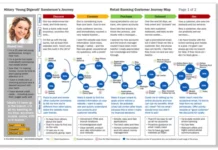I see a lot of people spend a lot of time and effort making sure they focus on the “right” metric in their customer feedback program. Net promoter? Customer Satisfaction? Customer Effort? Something else? All of the above?
There’s often a lot less thought going into what to do with the survey data: who should get it, how often, how will it be used, how will people be coached and compensated, how will you follow up with customers, and so forth.
This is a big mistake, since most of the value of a successful customer feedback program comes from all the things that happen after the data is collected. In my not-very-scientific estimation, I would say that 75% of the value is in the process, with only 25% from the metrics.
I could be wrong, though: I would believe that as much as 90% of the value is in the process.
Even a mediocre metric is going to allow a lot of improvement in a well-designed closed-loop feedback process. But no metric, no matter how good, is going to drive change if there’s no follow-through.
So why so much attention to the metric, and not everything else?
I think it’s because deciding what metrics to include on a customer survey feels important but doesn’t require much hard work. Everyone can advocate for their favorite survey questions, there can be a lively discussion, and an executive can weigh in to break the tie. You get to feel like you had a productive day.
But getting everything else right takes a lot more time, effort, and attention. A successful customer feedback program needs to be actively managed, it requires ongoing executvie attention and support, and it requires constant tweaking to adjust to the changing dynamics of the business. You can’t just throw money at it.
Most people think that the scarcest resource at most companies is money. That’s often true in small companies, but most large companies have plenty of money to invest in the things they think are most important. In big companies, often the hardest resource to obtain is attention–especially executive attention.
So it’s easier to pretend that the customer feedback program doesn’t need any ongoing attention, that you can make the big decisions once and be done with them.
But that’s not a recipe for success. Success requires focusing on the rest of the customer feedback process, and making it an ongoing priority. That’s hard. And that’s why people spend so much time worrying about the metric.




Peter, you make a great point here. Although when you say “process” I think you mean acting on insights.
I’ve been thinking along the same lines. If NPS, CSAT or CES aren’t perfect metrics, why is it that companies seem to have success with them?
I think the answer is that if the metric is reasonably good (a mushy term, I’ll admit) and gives directionally sound feedback on the bigger issues, then the real difference is how well the organization acts on the feedback.
You said it better:
Given how hard it is to come up with a perfect metric, even in companies that invest in their own custom research, it would seem wise to have a short list of metrics that can be used in combination to triangulate on the company’s position and action needed.
And, it’s important to gather feedback from multiple sources, not just surveys. Social media, surveys and online behavior all lend themselves to different metrics, none of which tells the complete story of how the customer perceives their experience, or what’s needed to improve loyalty.
I agree, not focusing on action on valuable income, whatever metric we use, is a dead end.
Also the actual term used, “metrics”, implies that we are looking into numbers, which is of course crucial when we are benchmarking ourselves. But in front of all digits, behind all plotted curves there is a human being, a customer of flesh and blood with their an opinion.
Customer feedback is not merely a metric thing. It is the ability to detect opinions, form it into a meaningful discussion, finding the value and act on it. At the end of the day it´s all about delivering added value.